Introduction: In this article, Melissa Davenport Berry begins to explore a DAR scrapbook created by Mary Louisa Foster (Nash) Power. Melissa is a genealogist who has a website, americana-archives.com, and a Facebook group, New England Family Genealogy and History.
For this mini-series I explore a scrapbook created by Mrs. Mary Louisa Foster (Nash) Power (1862-1947), a member of the Chief Justice Cushing Chapter, National Society Daughters of the American Revolution (DAR). More on Mrs. Power in later posts.
Here is a photo from the scrapbook of its creator Mary Power, daughter of John Cushing and Sarah Corene (Brown) Nash, and a direct descendant of Mayflower passenger William Brewster. She married Arthur Lindorf Power (1859-1940), son of Tileston Cushing and Clara Foster (Stone) Power.
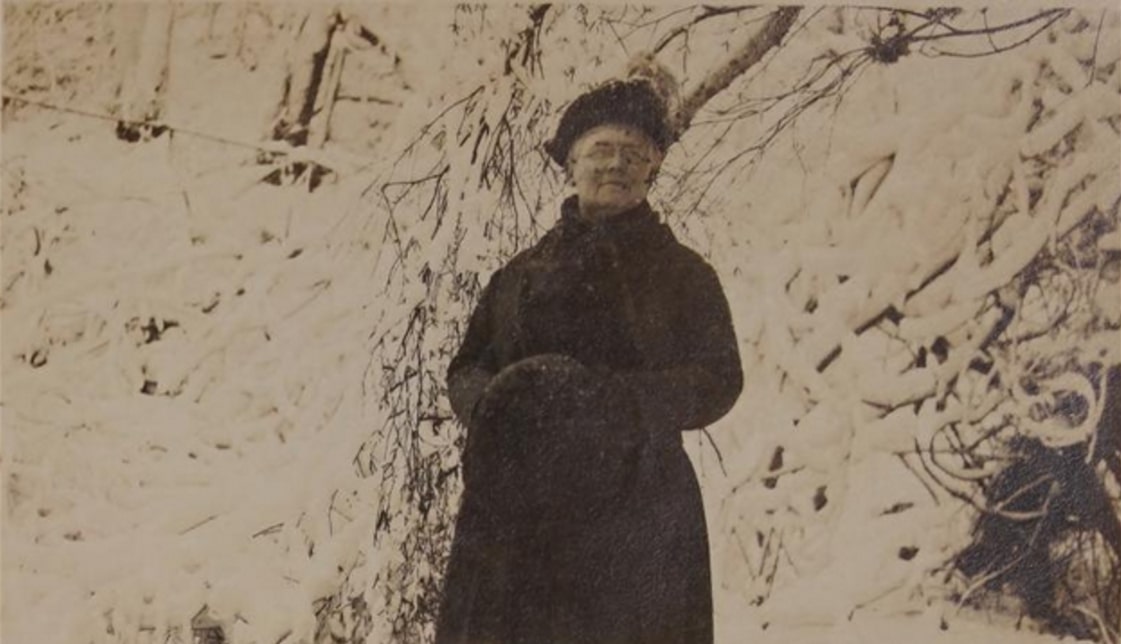
The scrapbook is housed at the Norwell Historical Society and covers the years 1917 through the late 1930s. You can view a copy of it at Americana-Archives.
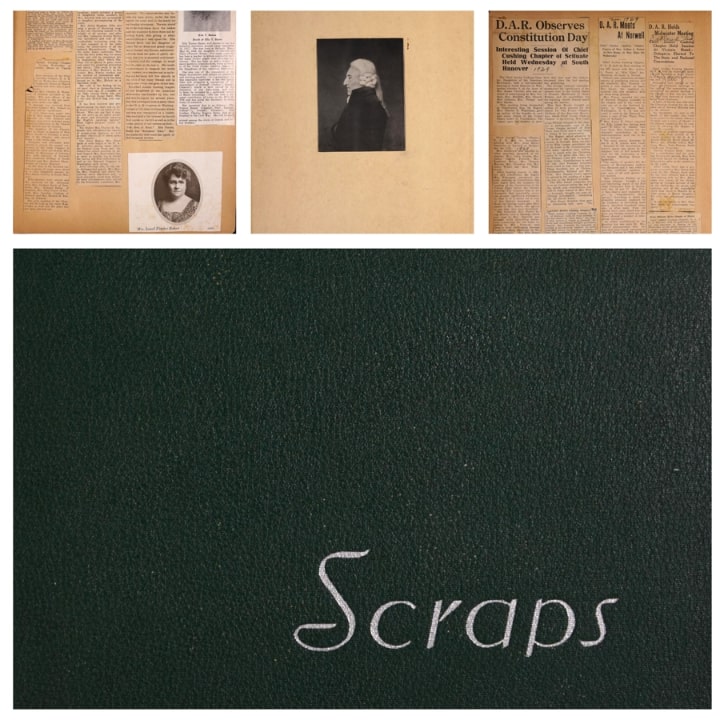
Before I begin with the scrapbook goodies here is some intel on the man whom this DAR chapter chose to honor and name itself after.
Honorable Chief Justice William Cushing
Chief Justice William Cushing (1732-1810) joined the U.S. Supreme Court on 2 February 1790 and was one of the first six justices appointed by President George Washington after the establishment of the Court. Cushing was the longest serving of those original jurists, from 1790 until his death in 1810.
William Cushing was born in Scituate, Province of Massachusetts Bay, to John and Mary (Cotton) Cushing. (Note: Originally, Scituate included the towns of Hanover and Norwell.) His mother Mary is the granddaughter of Rev. John Cotton. William married Hannah Phillips.
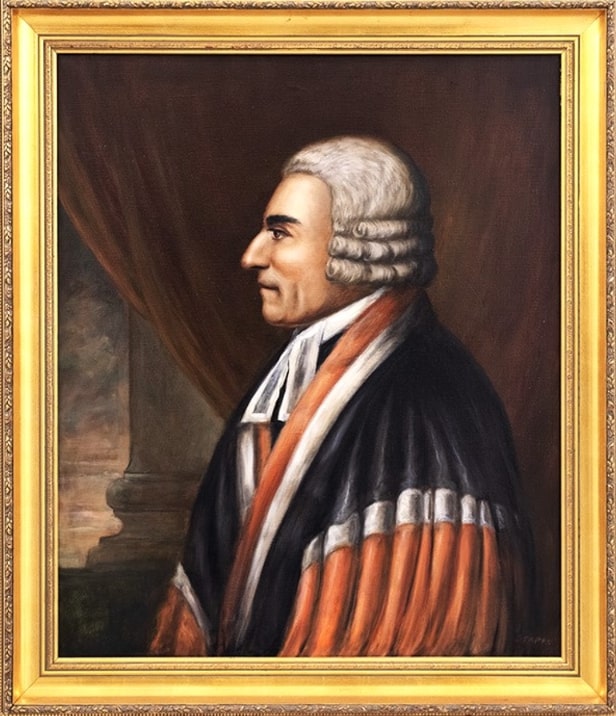
As Massachusetts Chief Justice, Cushing pronounced slavery unconstitutional in Massachusetts in 1783, more than 80 years before the United States would abolish slavery throughout the country by way of the Thirteenth Amendment.
Here is a feature article entitled “Grave Judgment: State’s Top Justice Visits Historical Burial Place,” published in the Patriot Ledger in 2000.
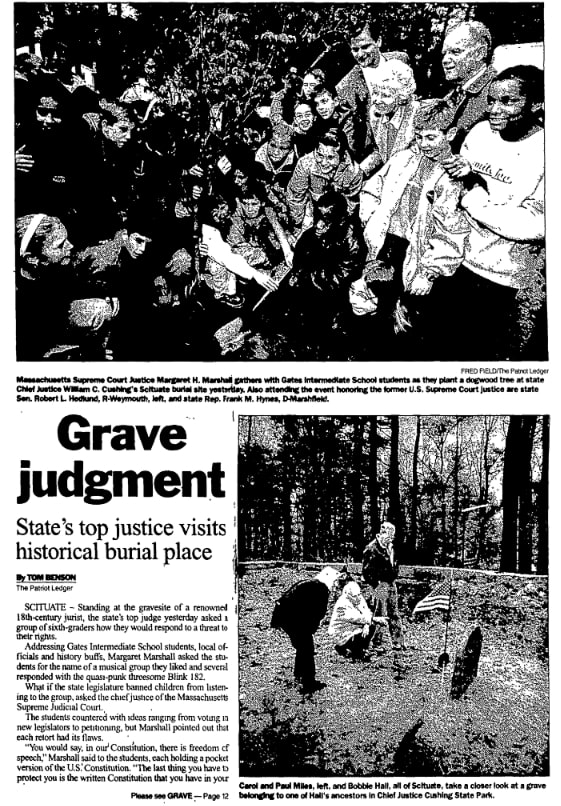
The top photo caption reads:
Massachusetts Supreme Court Chief Justice Margaret H. Marshall gathers with Gates Intermediate School students as they plant a dogwood tree at state Chief Justice William C. Cushing’s Scituate burial site yesterday. Also attending the event honoring the former U.S. Supreme Court justice are state Sen. Robert L. Hedlund, R-Weymouth, left, and state Rep. Frank M. Hynes, D-Marshfield.
The bottom photo caption reads:
Carol and Paul Miles, left, and Bobbie Hall, all of Scituate, take a closer look at a grave belonging to one of Hall’s ancestors in Chief Justice Cushing State Park.
This article reports that Judge Marshall explained to the students that slavery ended in Massachusetts more than 200 years ago after William C. Cushing, the man whose grave they were standing near, declared that the state constitution – a model for the U.S. Constitution – provided equality for all men and thus could abolish slavery.
In Cushing’s statement to the jury hearing a 1783 slavery case (Quock Walker v. Nathaniel Jennison), he called slavery “repugnant” and an affront to the State Constitution. The jury agreed and freed the slave in the case.
After they paid homage to Chief Justice Cushing, the students and attendees took a tour of the Old Oaken Bucket Homestead to view some artifacts of the former Chief Justice (one being the carriage shown below).
The newspaper article continues onto the next page, with this photo.
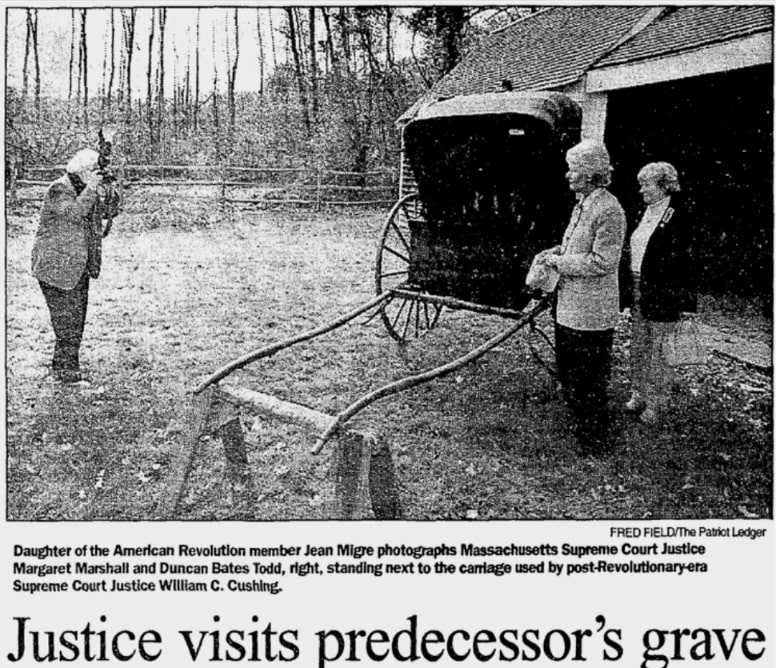
This photo caption reads:
Daughter of the American Revolution member Jean Migre photographs Massachusetts Supreme Court Justice Margaret Marshall and Ruth “Duncan” Bates Todd [also a DAR member], right, standing next to the carriage used by post-Revolutionary-era Supreme Court Justice William C. Cushing. [Both DAR members are from the Chief Justice Cushing Chapter.}
Duncan Bates Todd presented Chief Justice Marshall with a copy of the DAR’s history book “Old Scituate,” which I will reference in conjunction to the scrapbook later in this series.
The historical site and its well and bucket were made famous by American poet Samuel Woodworth, who wrote “The Old Oaken Bucket,” a nostalgic poem about a cool well – thus immortalizing his childhood days spent on this Scituate farm.
In 1935 the citizens of Scituate voted “The Old Oaken Bucket” as the town’s official song.
Here is a drawing of the Olk Oaken Bucket Homestead by Scituate artist Charles Wellington Furlong. As Furlong notes, this rare view of the home as it looked during Woodworth’s youth is “after a copy of a sketch drawn from memory by Samuel Woodworth, the poet.” Much more on this historic site in later posts.
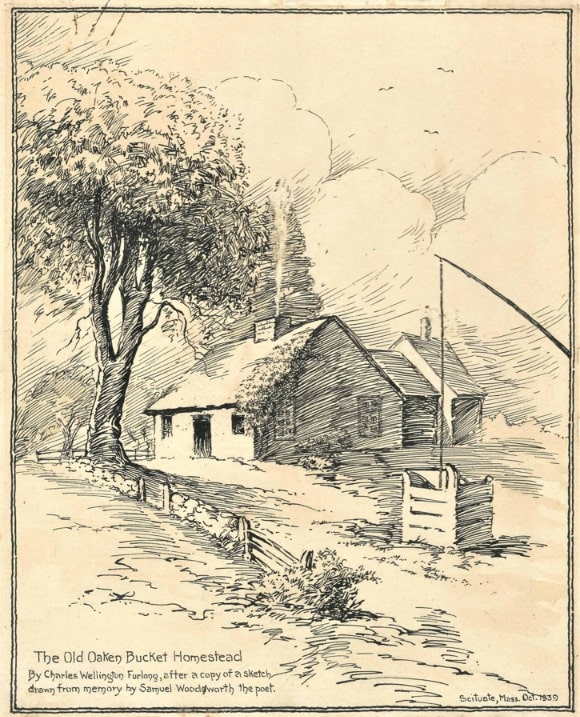
Below is a bronze memorial tablet of Chief Justice Cushing courtesy of the Scituate Historical Society.
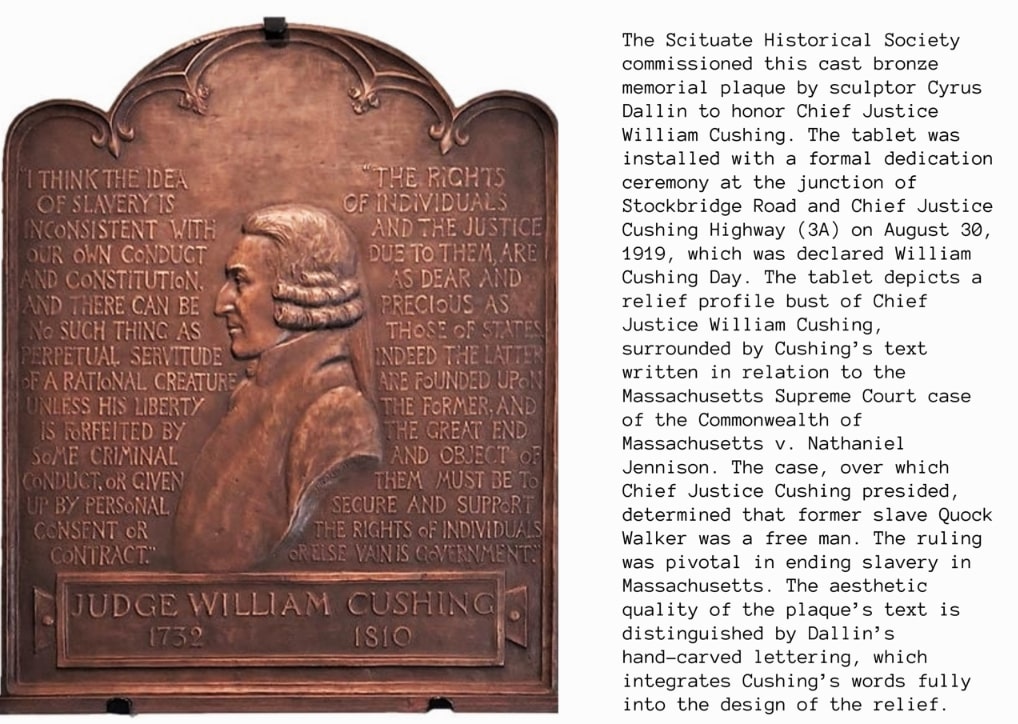
Explore over 330 years of newspapers and historical records in GenealogyBank. Discover your family story! Start a 7-Day Free Trial
Note on the header image: close-up of the portrait of Chief Justice William Cushing. Credit: Supreme Court Historical Society, Washington, D.C.
Further Reading:
- William Cushing judicial notebook: Legal notes by William Cushing about the Quock Walker case, [1783], Massachusetts Historical Society

Hello, I am the volunteer archivist for the Norwell Historical Society. It is so rewarding to see the material we digitized being used for research. The scrapbook was so fragile that it was falling apart when opened. One of our volunteers stabilized it and we had it digitized through Digital Commonwealth, a Boston Public Library service. This article enhances our understanding and appreciation of the scrapbook. Thanks so much!
Hi Janet! I so appreciate your feedback and I am so happy your organization has preserved this relic! Thanks for sharing your enthusiasm and I was so happy and blessed to work on this project!